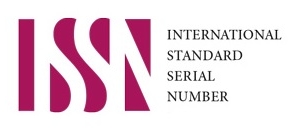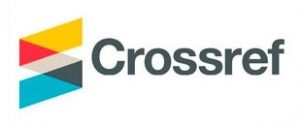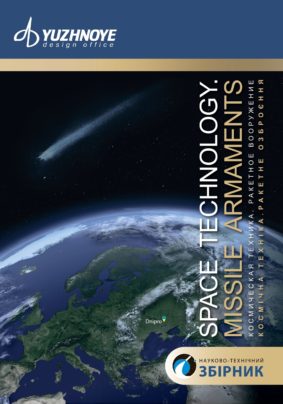Keywords cloud
10. Method of autonomous determination of the rocket’s reference attitude during pre-launch processing
Yangel Yuzhnoye State Design Office, Dnipro, Ukraine
Page: Kosm. teh. Raket. vooruž. 2024, (1); 85-92
DOI: https://doi.org/10.33136/stma2024.01.085
Language: Ukrainian
Key words: navigation system, mems-sensors, accelerometers, angular velocity sensors, reference attitude
- Meleshko V.V., Nesterenko O.I. Besplatformennye inertsialnye navigatsionnye systemy. Ucheb. posobie. Kirovograd: POLIMED – Service, 2011. 164 s.
- Vlasik S.N., Gerasimov S.V., Zhuravlyov A.A. Matematicheskaya model besplatformennoy inertsialnoy navigatsionnoy systemy i apparatury potrebitelya sputnikovoi navigatsionnoy systemy aeroballisticheskogo apparata. Nauka i technika Povitryannykh Sil Zbroinykh Sil Ukrainy. 2013. № 2(11). s. 166-169.
- Waldenmayer G.G. Protsedura pochatkovoi vystavki besplatformennoy inertsialnoy navigatsionoy systemy z vykorystannyam magnitometra ta rozshirennogo filtra Kalmana. Aeronavigatsini systemy. 2012. s. 8.
- Korolyov V.M., Luchuk Ye.V., Zaets Ya.G., Korolyova O.I., Miroshnichenko Yu.V. Analiz svitovykh tendentsiy rozvytku system navigatsii dlya sukhoputnykh viysk. Rozroblennya ta modernizatsia OVT. 2011. №1(4). s.19-29. https://doi.org/10.33577/2312-4458.4.2011.19-29
- Avrutov V.V., Ryzhkov L.M. Pro alternativniy metod avtonomnogo vyznachennya shyroty i dovgoty rukhomykh obiektiv. Mekhanika gyroskopichnykh system. 2021. №41. s. 122-131. https://doi.org/10.20535/0203-3771412021269255
- Bugayov D.V., Avrutov V.V., Nesterenko O.I. Experimentalne porivnyannya algoritmiv vyznachennya orientatsii na bazi complimentarnogo filtru ta filtru Madjvika. Avtomatizatsiya technologichnykh i biznes-protsesiv. 2020. T. 12, №3. s. 10-19.
- Chernyak M.G., Kolesnik V.O. Zmenshennya chasovykh pokhibok inertsialnogo vymiryuvalnogo modulya shlyakhom realizatsii yogo strukturnoi nadlyshkovosti na bazi tryvisnykh micromekhanichnykh vymiruvachiv. Mekhanika giroskopichnykh system. 2020. №39. s. 66-80. https://doi.org/10.20535/0203-3771392020229096
- Rudik A.V. Matematichna model pokhibok accelerometriv bezplatformenoi inertsialnoi navigatsinoi systemy. Visnyk Vynnitskogo politechnychnogo institutu. 2017. №2. s. 7-13.
- Naiko D.A., Shevchuk O.F. Teoriya iomovirnostey ta matematychna statistika: navch. posib. Vinnytsya: VNAU. 2020. 382 s.
- Matveev V.V., Raspopov V.Ya. Osnovy postroeniya bezplatformennykh inertsialnykh navigatsionnykh system. SPb.: GNTs RF OAO «Kontsern «TsNII «Electropribor». 2009. 280 s.
- Novatorskiy M.A. Algoritmy ta metody obchislen’ [Electronniy resurs]: navch. posib. dlya stud. KPI im. Igorya Sikorskogo. Kiyv: KPI im. Igorya Sikorskogo. 2019. 407 s.
Full text (PDF) || Content 2024 (1)
| Country | City | Downloads |
|---|---|---|
| USA | Ashburn; Ashburn; San Jose; San Francisco; Clearwater; Chicago; Los Angeles; Ashburn; Dublin; Buffalo; Los Angeles; Phoenix; Phoenix; Phoenix; Phoenix; Phoenix; Phoenix; Phoenix; Phoenix; Phoenix; Phoenix; Phoenix; Phoenix; Phoenix; Phoenix; Phoenix; Phoenix; Phoenix; Phoenix; Phoenix; Phoenix; Phoenix; Phoenix; Phoenix; El Monte; Ashburn; Columbus; Ashburn; Ashburn; Ashburn; Quinton; Houston; Mountain View; Mountain View; Portland; Portland; San Mateo; Redmond;; Pompano Beach | 50 |
| Germany | Falkenstein; Falkenstein; Düsseldorf;; Falkenstein; Leipzig; Leipzig | 7 |
| China | Pekin; Chizhou;; Shenzhen; Pekin | 5 |
| Singapore | Singapore; Singapore; Singapore; Singapore; Singapore | 5 |
| Ukraine | Uzhhorod; Zolochiv; Kremenchuk; Kremenchuk | 4 |
| Canada | Toronto; Toronto; Toronto | 3 |
| Unknown | ; Hong Kong | 2 |
| France | 1 | |
| Netherlands | Amsterdam | 1 |
| Cyprus | Limassol | 1 |
1. Optimization of the trajectory of the antiaircraft guided missile
Yangel Yuzhnoye State Design Office, Dnipro, Ukraine
Page: Kosm. teh. Raket. vooruž. 2019, (2); 3-10
DOI: https://doi.org/10.33136/stma2019.02.003
Language: Russian
Key words: anti-aircraft missile, optimization, angle of attack program, trajectory
Full text (PDF) || Content 2019 (2)
| Country | City | Downloads |
|---|---|---|
| USA | Boardman; Ashburn; San Jose; Matawan; Baltimore;;; Boydton; Plano; Dublin; Ashburn; Columbus; Ashburn; Los Angeles; Phoenix; Phoenix; Phoenix; Phoenix; Phoenix; Phoenix; Phoenix; Phoenix; Phoenix; Phoenix; Phoenix; Phoenix; Phoenix; Phoenix; Phoenix; Phoenix; Phoenix; Phoenix; Monroe; El Monte; El Monte; El Monte; Ashburn; Seattle; Ashburn; Ashburn; Ashburn; Ashburn; Boardman; Ashburn; Mountain View; Mountain View; Mountain View; Seattle; Seattle; Portland; Portland; San Mateo; San Mateo; San Mateo; San Mateo; Columbus; Columbus; Des Moines; Des Moines; Boardman; Boardman; Ashburn; Ashburn; Ashburn; Pompano Beach | 65 |
| Singapore | Singapore; Singapore; Singapore; Singapore; Singapore; Singapore; Singapore; Singapore; Singapore; Singapore; Singapore; Singapore; Singapore; Singapore | 14 |
| Canada | Toronto; Toronto; Toronto; Monreale | 4 |
| Germany | Falkenstein; Falkenstein | 2 |
| Ukraine | Odessa; Dnipro | 2 |
| France | Paris; Paris | 2 |
| Netherlands | Amsterdam; Amsterdam | 2 |
| Finland | Helsinki | 1 |
| Unknown | Hong Kong | 1 |
| Türkiye | Istanbul | 1 |
| Romania | Voluntari | 1 |
6. On Building of Inertial Navigation System in the Condition of Presence of Considerable g-Load and Angular Velocity in Preferential Direction
Yangel Yuzhnoye State Design Office, Dnipro, Ukraine
Page: Kosm. teh. Raket. vooruž. 2018 (1); 31-38
DOI: https://doi.org/10.33136/stma2018.01.031
Language: Russian
Key words:
Full text (PDF) || Content 2018 (1)
| Country | City | Downloads |
|---|---|---|
| USA | Ashburn; Matawan; Los Angeles; Baltimore;;; Plano; Miami; Dublin; Phoenix; Phoenix; Phoenix; Phoenix; Phoenix; Phoenix; Phoenix; Phoenix; Phoenix; Phoenix; Phoenix; Phoenix; Phoenix; Phoenix; Phoenix; Phoenix; Monroe; El Monte; El Monte; Ashburn; Seattle; Seattle; Ashburn; Ashburn; Seattle; Houston; Ashburn; Seattle; Tappahannock; Portland; Portland; San Mateo; San Mateo; San Mateo; San Mateo; Ashburn; Des Moines; Boardman; Boardman; Ashburn; Ashburn; Ashburn; Pompano Beach; Seattle | 53 |
| Singapore | Singapore; Singapore; Singapore; Singapore; Singapore; Singapore; Singapore; Singapore; Singapore; Singapore; Singapore; Singapore; Singapore; Singapore; Singapore | 15 |
| Canada | Toronto; Toronto; Toronto; Toronto; Monreale | 5 |
| Germany | Falkenstein; Falkenstein | 2 |
| Netherlands | Amsterdam; Amsterdam | 2 |
| Philippines | 1 | |
| China | Pekin | 1 |
| Finland | Helsinki | 1 |
| Pakistan | 1 | |
| Great Britain | London | 1 |
| France | 1 | |
| Romania | Voluntari | 1 |
| Ukraine | Dnipro | 1 |
13. Prediction of Solid Propellant Burnout Time in Launch Vehicle Propulsion System in Flight
Yangel Yuzhnoye State Design Office, Dnipro, Ukraine
Page: Kosm. teh. Raket. vooruž. 2019, (1); 87-94
DOI: https://doi.org/10.33136/stma2019.01.088
Language: Russian
Key words: guidance system, correlation analysis, procedure, mathematical simulation
1. Osnovy teorii avtomaticheskogo upravleniya raketnymi dvigatelnymi ustanovkami / A. I. Babkin, S. I. Belov, N.B. Rutovskiy i dr. – M.: Mashinostroenie, 1986. – 456 s.
2. Proektirovanie system upravleniya obiektov raketno-kosmicheskoy techniki. T. 1. Proektirovanie system upravlenia raket-nositeley: Uchebnik/Yu. S. Alekseev, Yu. Ye. Balabey, T. A. Baryshnikova i dr.; Pod obshey red. Yu. S. Alekseeva, Yu. M. Zlatkina, V. S. Krivtsova, A. S. Kulika, V. I. Chumachenko. – Kh.: NAU «KhAI», NPP «Khartron-Arkos», 2012. – 578 s.
3. Sikharulidze Yu. G. Ballistika letatelnykh apparatov. – M.: Nauka, 1982. – 352 s.
4. Lysenko L. N. Navedenie I navigatsia ballisticheskykh raket: Ucheb. posobie. – M.: Izd-vo MGTU im. N. E. Baumana, 2007. – 672 s.
5. Systemy upravleniya letatelnymi apparatami (ballisticheskimi raketami I ikh golovnymi chastyami): Uchebnik dlya VUZov/ G. N. Razorenov, E. A. Bakhramov, Yu. F. Titov; Pod red. G. N. Razorenova. – M.: Mashinostroenie, 2003. – 584 s.
6. Siouris G. M. Missile guidance and control systems. – New York: Springer-Verlag New York, Inc., 2004. – 666 p. https://doi.org/10.1115/1.1849174
7. Zarchan P. Tactical and Strategic missile guidance. – American Institute of Aeronautics and Astronautics, Inc., 2012. – 989 p. https://doi.org/10.2514/4.868948
8. Balakrishnan S. N. Advances in missile guidance, control, and estimation / S. N. Balakrishnan, A. Tsourdos, B.A. White. – New York: CRC Press, Taylor & Francis Group. 2013. – 682 p.
9. Shneydor N. A. Missile guidance and pursuit: kinematics, dynamics and control. – Horwood Publishing Chichester, 1998. – 259 p. https://doi.org/10.1533/9781782420590
10. Yanushevsky R. Modern missile guidance. – CRC Press, Taylor & Francis Group, 2008. – 226 p. https://doi.org/10.1201/9781420062281
Full text (PDF) || Content 2019 (1)
| Country | City | Downloads |
|---|---|---|
| USA | Boardman; Ashburn; Matawan; Los Angeles; North Bergen; Plano; Columbus; Phoenix; Phoenix; Phoenix; Phoenix; Phoenix; Phoenix; Phoenix; Phoenix; Phoenix; Phoenix; Phoenix; Phoenix; Phoenix; Phoenix; Phoenix; Phoenix; Phoenix; Phoenix; Monroe; El Monte; El Monte; Ashburn; Seattle; Seattle; Columbus; Ashburn; Ashburn; Ashburn; North Charleston; Seattle; Tappahannock; Portland; San Mateo; San Mateo; San Mateo; San Mateo; Ashburn; Ashburn; Des Moines; Boardman; Ashburn; Ashburn; Ashburn; Ashburn; Ashburn; Pompano Beach | 53 |
| Singapore | Singapore; Singapore; Singapore; Singapore; Singapore; Singapore; Singapore; Singapore; Singapore; Singapore; Singapore; Singapore; Singapore; Singapore | 14 |
| Canada | Toronto; Toronto; Toronto; Toronto; Monreale | 5 |
| Great Britain | London; London | 2 |
| Netherlands | Amsterdam; Amsterdam | 2 |
| Finland | Helsinki | 1 |
| Ethiopia | Addis Ababa | 1 |
| Mongolia | 1 | |
| Germany | Falkenstein | 1 |
| Romania | Voluntari | 1 |
| Ukraine | Dnipro | 1 |
Collected scientific and technical articles «Космічна техніка. Ракетне озброєння» / «Space technology. Missile armaments» is the specialized professional edition, where new results of the theoretical and experimental research in the rocket and space area are published.
Subject matter of the collected articles covers the issues of creation and operation of the up-to-date missile and space launch systems, spacecraft and satellite systems, as well as their component parts, in particular:
– design and development of the launch-vehicles/integrated launch vehicles, missiles, ground complexes;
– design and development of the components parts for the launch vehicles/integrated launch vehicles, missiles (solid- and liquid-propellants engines, power supply systems, control systems, separation systems, arming etc.);
– design and development of the component parts for the ground complexes (buildings, filling systems, pre-launch processing systems etc.);
– design and development of the spacecraft and their component parts;
– spaceflight and studies of the Moon and other planets;
– materials and up-to-date technologies in the rocket and space technology;
– issues of aerodynamics, heat-mass exchange, flight theory, loading and strength of the structures;
– issues of efficiency, reliability, safety and feasibility of the rocket and space systems;
– other aspects that directly relate to the creation and operation of the rocket and space systems.
According to Orders of the Ministry of Science and Education of Ukraine No. 1643 of 28.12.2019, No.409 of 17.03.2020, and No. 1188 of 24.09.2020 concerning the list of the professional scientific publications where the results of theses for the degrees of doctor of sciences, candidate of sciences, and doctor of philosophy, the journal Space Technology. Rocket Weapons was included in Category B.
The codes of specialties for thesis defense:
134 Aircraft and space rocket technologies;
142 Engineering of power generation plants;
151 Automatization and integrated computer technologies.
The collected articles edition publishes the results of scientific research of the scientists, scholars and research and educational personnel of the scientific institutions and institutions of higher educations to get nominated for the degrees of Candidate of Engineering (Doctor of Philosophy), Doctor of Engineering Sciences and Doctor of Physical and Mathematical Sciences. The collected articles cover the following fields: 134 – Aviation and rocket & space technology; 142 – Power engineering; 151 – Automation and computer-integrated technologies.
Until 1993 the collected scientific and technical articles «Космічна техніка. Ракетне озброєння» / «Space technology. Missile armaments» was published under the title of «Calculations, design, development and testing of the ballistic missiles».
Publisher: State Enterprise «Yuzhnoye» State Design Office».
Languages of publication: Ukrainian, English.
Frequency of edition: twice a year.
State registration of the printed media in the Ukraine’s National board for the broadcasting activities: media identifier – R30-01817 of 04.12.2023.



